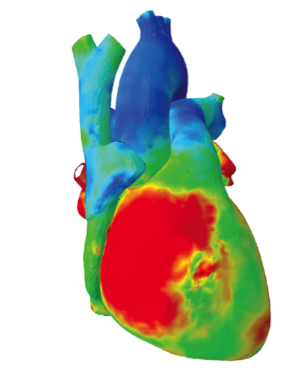By: TOP500 Team
High-performance computing (HPC) is driving new insights and discoveries in the fields of life sciences and oil and gas. Intel® Scalable System Framework (Intel® SSF), Intel’s HPC approach incorporating a single, balanced architecture for scalable clusters that can run codes used for simulation, analytics, visualization, and machine learning, is powering new breakthroughs in these fields. Two new portals on Intel’s web site, Intel® SSF for Life Sciences and Intel SSF for Oil and Gas, highlight how Intel SSF is enabling insights in these computationally intense fields.
Intel SSF for Life Sciences showcases how Intel® SSF and Intel® Xeon® processor E5 family are powering the Living Heart Model (LHM) and enabling Big Data analytics to understand genes lurking behind cancer. The LHM is an anatomically accurate, 3D electromechanical model of an adult human heart with dynamic behavior driven by physiological principles. Intel, the Massachusetts’s Institute of Technology (MIT), and Dassault Systèmes is part of a multi-disciplinary team that has come together to create The Living Heart Project, giving researchers a new tool for simulating cardiac diseases and devising effective treatments.
 |
“The Living Heart Project extends the value of high-performance computing in the life sciences, alongside research and therapies in areas such as genomics, pharmacology, and computational biology.” Ketan Paranjape, General Manager of Life Sciences and Analytics at Intel |
Computed stresses depicted on a 3D rendering of the Living Heart model. Image courtesy Dassault Systèmes.
At the Human Genome Center large amounts of genetic data from patients is being used to carry out simulation analysis using supercomputers equipped with the Intel® Xeon® processor E5 family, in an effort to thoroughly understand the mechanisms of cancer. Genomic information and HPC are also enabling new developments in personalized medical care where, where treatments are being tailored to what supercomputing analysis can reveal from individual genomes.
Intel SSF for Oil and Gas illustrates how Intel’s approach to HPC is changing the dynamics in this industry. Oil and gas exploration, and production success, can hinge on image fidelity and time to visualization. Intel SSF with advanced parallelism from Intel® Xeon Phi™ processors is paving new paths for more compute-intensive algorithms and techniques that visualize deposits fast and in very high-fidelity. Companies running optimized codes, such as Kirchhoff migration, for Intel Xeon Phi processor’s many integrated core (MIC) architecture are accelerating their visualization and discovery times.

Image courtesy DownUnder GeoSolutions.
This field is one of the most IO demanding sciences on the planet when it comes to computing. It takes a very fast file system and HPC architecture to bring this data to a high-fidelity visual conclusion—or any conclusion—for discovery and insight. Intel SSF tackles the challenges of taking data from disk to insight fast and efficiently to help accelerate resource development.
In addition to Intel Xeon and Intel Xeon Phi processors, Intel SSF comprises Intel® Solutions for Lustre* software for incredibly fast storage; advanced parallelism powered by high-performance processing from the leading Intel® CPUs used in supercomputers; Intel® Omni-Path Architecture high-speed, low-latency fabric to quickly move data; and modernized software for a solid foundation to run the latest, optimized scientific codes.
"Integration is the key direction, the common thread over time, for how we advance supercomputing," commented Al Gara, Intel Fellow and Lead HPC Solution Architect. Intel SSF follows that path of integration to bring the data closer to computing resources through integrated fabric, many-core Intel® Xeon Phi™ processors, and high-performance Intel® Optane SSDs and memory based on 3D Xpoint™ technology.
From genomics to drug discovery to energy reserve exploration and well development and management, supercomputing clusters built on Intel Scalable System Framework are key enabling tools for scientists and researchers to unlock the mysteries and reveal the hidden resources that nature holds.
Learn more about Intel Scalable System Framework.
